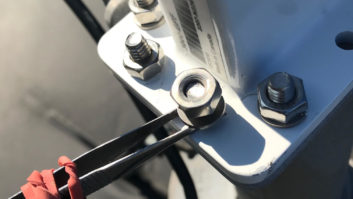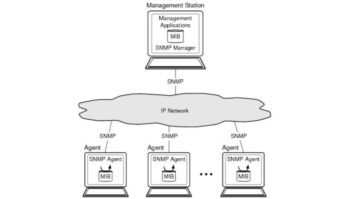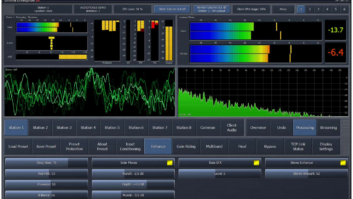
“Maybe it’s because we’re back where we belong.”
That’s the explanation a long-time radio exhibit insider offered for the undeniably upbeat feeling on the convention floor at the NAB Show in April.
“Where we belong” means the Central Hall of the Las Vegas Convention Center, where the majority of radio manufacturers clustered.
She’s absolutely right. By moving the center of radio gravity back from the North Hall after many years, NAB organizers ran a jolt through the event for a lot of radio folks. Traffic was good, salespeople were busy and there was more of a sense of activity throughout than in the recent past. It was heartening to walk the exhibit floor and feel such a positive vibe.
This kind of thing matters to those of us who believe that a vibrant supplier marketplace is critical to the health of our business, and to their ability to do their jobs.
The economy, though, is the bigger reason for the change. Manufacturers were smiling about first-quarter performance and what they’ve been hearing from broadcast customers. “Upbeat.” “Much improved.” “Turned a corner.” These were typical phrases.

Bill Gould discusses the Moseley family of products on the NAB Show floor. Photo by Jim Peck As I wrote on the Radio World blog during the show, it appears radio engineers will have more money to spend this year on RF and studio plants. The cap-ex situation over the past year and a half has been severe (“like someone turning off a light switch,” as one person put it, recalling late 2008); but 2010 is looking better.
‘Get it done’
This upbeat conclusion comes with caveats.
Attendees at any convention are not likely to constitute a statistically representative sample. More important, broadcasters with big debts are likely to remain stingy with spending; it’s not “pedal to the metal” time for them.
I heard from one trustworthy vendor that the cutback in cap-ex spending at Clear Channel in particular is breathtaking, even while CC has managed to cut dealer markup on many of the products it is buying to low single percentage points through innovative buying techniques including an online reverse auction among its vendors.
(Faced with very tight cap ex, one observer told me: “If I was an engineer preparing my budget, I’d put it all into duct tape.”)
Another company, a transmitter manufacturer, said that although business has indeed been picking up, a typical order now might be for one transmitter where a buyer earlier had projected buying several.
“It’s not that it’s healthy,” said a third exec, who works for an antenna company. “It took a lot of time for manufacturers to swallow their pride and discount a lot. They’re less profitable.”
But these were minority comments.
I heard much that was upbeat, even from notable curmudgeons. I talked to one high-level engineer at a top-five radio group who said budgets were “back to normal” as of January, with a lot of RF projects coming along. The message from his corporate people is “get it done.” Another company owner, who makes hardware, said the tone among clients right now is, “Maybe I can do that this year.” That captures the spirit of the talk I heard.
Price is king
If equipment buyers are coming back, though, they remain extremely price sensitive. As one fellow put it, “Price is king at this show.”
That puts pressure on manufacturers to fill lower price points, and we’ve seen the result across product classes, nowhere more than in consoles and transmitters. Even the biggest names, ones we associate with top end manufacturing, now offer more in the economy range, more models and more options at lower prices. It’s remarkable how much engineering quality and know-how you can get for your money as a result.
I can imagine the strategy conversations at a successful, R&D-driven manufacturer: “Is it good for our prestigious business to go ‘economy’? Does it help or hurt our brand? Are we turning ourselves into a commodity with no differentiation from the other guys? And does a low-cost rollout by our competitor open an opportunity for us on the upscale side?”
These market forces can be fascinating to watch play out. The move toward value is good news for buyers, though it’s likely to make business tougher for manufacturers that long have specialized in the lower-end niche.
This also was the year of the iPad. Though Apple’s pretty tablet had only been on the market a few days, its fabulous form factor and beautiful display drew many compliments. Well-designed content that looks good on an iPhone looks spectacular on an iPad.
It was the year of iPhone apps being applied to solving radio technology problems. And it was a year for high-end FM processors, as rival practitioners of that dark art emerged from their jealously guarded labs, blinked in the sunlight and pulled back their wizards’ capes to reveal their latest DSP-fed creations.
Meanwhile, we continue to hear about interoperability, about digital power, about interest in RDS (even after all these years!), about IP audio, about the morphed nature of an engineer’s job (“There’s a new generation of engineers. The only tool they own is an RJ45 crimper”) and, unfortunately, about still more cutbacks in engineering staffs in radio and TV.
Attendance was estimated at 88,000, up around 6 percent. I keep myself at arm’s length from NAB’s unaudited convention attendance numbers; and anyway the radio portion of the gathering is much smaller, so the overall number doesn’t tell us much. But the reported delta in attendance feels right.
The show felt to me, by most measures, a success. One thing is certain: Radio was back where it belongs.
In coming weeks, we’ll have more post-show discussion, “Cool Stuff” winners and our summer product preview featuring gear from the floor.












